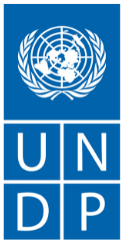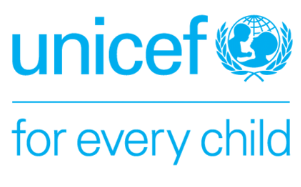28 APRIL 2022, NEW YORK - “In this momentof multiple and cascading crises, a strategic and risk-informed approach tofinancing recovery is indispensable. Here, integrated national financing frameworks are a powerful tool,” said Amina Mohammed, United Nations Deputy Secretary-General,in her opening remarks for the virtual launch of the Integrated NationalFinancing Framework (INFF) Facility.
Over 500 people from 113 countries attendedthe event, which was hosted by the Facility’s partners: the United NationsDevelopment Programme (UNDP), the United Nations Department of Economic andSocial Affairs (UN DESA), the Organisation for Economic Co-operation andDevelopment (OECD), the European Union (EU) and the Governments of Italy andSweden.
The Deputy Secretary-General was joined by UNDPAdministrator Achim Steiner, UN DESA Under-Secretary-General Liu Zhenmin, OECDDeputy Secretary-General Jeffrey Schlagenhauf, Ecuador’s Vice Minister of FinanceH.E. Bernardo Orellana, Uzbekistan’s Deputy Minister of Finance H.E. AkhadbekHaydarov and speakers from the European Commission, Government of Tanzania,Mongolia, Sweden and Italy.
The panellists introduced audience members to the INFFFacility – a joint flagship initiative that responds to the demand fortechnical support from the more than 80 countries implementing INFFs – and sharedhigh-level insights from INFFs in Uzbekistan, Ecuador, Tanzania and Mongolia.
Here, we recap key moments from the event.
Facing a ‘great finance divide’, INFFpartners and government representatives appeal for urgent action
The launch event took place on thesidelines of this year’s Forum on Financing for Development (FfD Forum) in NewYork, where world leaders discussed the current challenges of financingsustainable development and re-upped their commitment to delivering resourcesfor the 2030 Agenda and Paris Agreement.
World leaders met against a backdrop ofa highly fragile global economic outlook. In her opening remarks to the forum,the Deputy Secretary-General set the scene, calling attention to the looming debtcrisis, soaring food and fuel prices, the ongoing Covid-19 pandemic, the‘ticking time bomb’ of climate crises and rising geopolitical tensions.
Just two weeks earlier, the UN’sInter-Agency Task Force on Financing for Development warned of a deepeningfinance divide driving uneven recovery from Covid-19in the latest Financing for Sustainable Development Report.
Leaders voiced concern that verylittle progress has been made since member states adopted the Addis AbabaAction Agenda in 2015. Any progress that has been made has not been distributedequitably between or within countries. Securing sufficient financing remains amajor barrier to implementing the 2030 Agenda.
Panellists at the INFF Facility launchechoed these sentiments. “Even before the Covid-19 crisis hit, SDG financingwas falling short,” said OECD Deputy Secretary-General JeffreySchlagenhauf. “Pre-Covid, the financing gap was about$2.5 trillion per year. According to our current estimates, we believe recentcrises may have increased that amount by up to 50 percent.”
Katherine Baer,Deputy Director of the Fiscal Affairs Department of the InternationalMonetary Fund (IMF), warned of thedomino effect of rising food and fuel prices due to the war inUkraine, which will further impair growth across regions andreduce fiscal space. “We could see gains in poverty reduction over the lastdecade reversed,” she said.
Over 80 countries adopt INFFs, ‘apowerful tool’ for financing the SDGs.
Under the spectre of a looming financialcrisis and a potential lost decade for development, INFFs offer a shining light.
“We realise that we are facing anextraordinary challenge,” said UNDP Administrator Achim Steiner. “Countries arenot only looking at how they can invest forward - we are scrambling to seehow we can protect what we have - and stabilise economies.
“INFFs are helping countries chart theircourse through these very stormy waters.”
Over the last decade, the development financelandscape has shifted. New players, instruments and sources of funding havecreated opportunities for countries. “The landscape, in general, has changeddramatically,” said H.E. Bernardo Orellana, Ecuador’s Vice Minister of Finance.
This shifting paradigm also createsnew challenges. “It adds a layer of complexity andrisk,” said Mr Schlagenhauf. “Research by the OECD shows that developing countrieshave more than 1,000 instruments to choose from to finance theirdevelopment.”
Countries are usingINFFs to navigate the challenges and complexity of the current context – andhave built considerable momentum. In 2019, 16 countries committed to pioneeringthe INFF approach. Today, more than 80 countries are developing INFFs.
Led by ministries of financeand planning, governments are using the INFF approach to put in place robuststrategies for financing recovery and SDG progress. Through INFFs, countriesare driving forward hundreds of reforms to align public and private financewith the SDGs.
As INFFs progress, there is growing demand from countries for technicalsupport to help navigate this complexity and deliver prioritised reforms.
At the same time, support from a range of global and regional partners is ramping up, includingfrom international and regional financial institutions: the IMF, World Bank,Asian Development Bank and Islamic Development Bank, amongst others. The INFF Facility will coordinate and channel this support, leveraging the expertise of UNDP, UN DESA, OECD, EU, Italy andSweden and building new partnerships.
Of the IMF’s existingsupport and tools, Ms Baer said, the link with INFF progress is clear,especially when it comes to helping countries formulate financing strategies.The IMF’s ongoing work to improve tax policies and revenue administrationcontribute directly to domestic resource mobilisation efforts outlined withinINFF-driven financing strategies.
Amb.Fabio Cassese, Italy’s Director General of Development Cooperation, believesthe Facility will provide a unique platform to convene and align multilateraland bilateral support for development financing. It will build on the workItaly championed during its 2021 G20 Presidency, which led to a G20 endorsement of INFFs and a framework of voluntary support to INFF processes at the Leaders’ Summit in Rome.
Over 250 reforms hold promise forpreviously untapped finance, particularly from the private sector.
“2022 is a crucial year,” said Marjeta Jager, the EuropeanCommission’s Deputy Director-General for International Partnerships. Of the80-plus countries using the INFF approach, 40 will develop their financingstrategies this year.
Through these financing strategies, countries aredetailing ambitious agendas to reform policies, instruments and platforms tomobilise and align finance with their sustainable development priorities. “Notwo financing strategies will be alike,” said Liu Zhenmin, UN DESAUnder-Secretary-General. Each set of reforms is tailoredto national contexts and priorities.
Over 250 reforms have already beenidentified. For Mr Steiner, this translates to anarticulation of developing country needs on a massive scale. “We are seeingvery quickly an agenda of reforms emerge,” said Mr Steiner.
Many of these reformsare already yielding results. In 2021, the Government of Uzbekistan issued a $870 million SDG bond, raisingresources fornational projects in water management, health, transportation, pollutioncontrol, management of natural resources and green energy.
For H.E.Akhadbek Haydarov, Uzbekistan’s Deputy Minister of Finance, the SDG bond isjust the beginning. The government will roll out additional innovative financing instruments,including green bonds, blended finance mechanisms and Islamic financeinstruments, to complement public finance reforms, said Mr Haydarov.
In Tanzania, the cost of the country’s latest five-year developmentplan is estimated to be upwards of $47 billion, almost $10 billion annually.The government is aiming for at least 35 percent to come from the privatesector.
“We are finding that the government alone cannot be ina position to finance all development projects,” said Dr Charles Mwamwaja,Financial Sector Commissioner for Tanzania’s Ministry of Finance. “The INFF isa great opportunity to bring the private sector on board.”
Under its INFF, Tanzania piloted a blended finance instrument that increased private sectorinvestment in agriculture and is developinga pipeline of bankable projects to attract investors.
Asked about Mongolia’s INFF experience, SonorLuvsandorj, Director of Financial Markets and Insurance Division in theMinistry of Finance, lauded the INFF approach as critical to “unlockingresource mobilisation opportunities and creating partnerships.”
In addition to pilotingresults-based SDG budgeting and costing across ministries, Mongolia establisheda multi-stakeholder platform on sustainable finance. Mr Luvsandorj credits the platform for enabling discussions to takeplace “at a much higher decision-making level, more frequently and involving awider range of actors.”
The INFF process hasallowed Mongolia to “move away from thepublic finance dominant model” and leverageprivate investment. In 2022, the Mongolian Stock Exchange published ESG reporting guidance to alignthe operations of over 200 private companies, a $2 billion marketcapitalisation, with sustainability principles. The Central Bankincluded the SDG taxonomy in their 2022 monetary policy guidelines to promotesustainable investments and loans.
INFF-driven reforms present anunmissable opportunity to accelerate SDG financing.
What’s next for INFFs?
Countries further along in their INFFprocess, like Mongolia, see their INFF as a continuous, self-improving processand a framework for cooperation. “We do not see it as an end goal,”said Mr Luvsandorj.Mongolia will continue to evaluate and evolve the design and implementation ofits financing strategy over time.
For Ecuador, a countrystill at the early stages of the INFF process, other countries offer valuableexamples of what is possible, especially when it comes to engaging the privatesector. “We see a lot of opportunities in the market,” said Vice Minister Orellana. “For example, in the Galapagos, we are looking intoissuing a blue bond and have been working with different investors.”
One of the criticalroles of the INFF Facility will be connecting countries operating withinsimilar contexts or implementing similar financing reforms. Ecuador will havemuch to learn, for example, from the world’s firstsustainable financing platform dedicated to the blue economy, launched last yearunder Cabo Verde’s INFF.
“We are all learning together,” said MrSteiner, closing the first panel. “We, as international partners, bring some ofthe experience, templates and methodologies, but really it is a process that isled by countries and, very quickly, innovations from within countries emerge.”
This point was echoed by Alan AtKisson, AssistantDirector-General of the Swedish International Development Cooperation Agency(Sida). “We see the establishment of the INFF Facility as contributing to theprocess of fostering an integrated approach, stimulating the innovation andreforms that are necessary,” he said.
Theseinnovations and reforms represent a timely opportunity to accelerate the SDGs,one that has not gone unnoticed by the international community.
“We see this as ahuge opportunity to transform national financial systems,” said Ms Jager onbehalf of the European Commission. “As INFFs progress there is growing demand from countries for technicalsupport to deliver on these promises. We need to work together in partnershipto deliver, she added. “It is really about working hard to support the people working hard tofinance the future - in a greener, more inclusive, more sustainable way.”
The INFF launch event demonstrated howmany people are working on and invested in INFFs and their success. Thesepeople are working hard to finance the future we want. With less than a decadeto go until 2030, all those investing in a more sustainable, inclusive andresilient future should be supported urgently.
If you missed the INFF launch event, youcan watch the event recording in English, French, Spanish, Arabic orRussian. If you want to learn more about developing anINFF or becoming a potential partner, contact the INFF Facility via Tim Strawson,SDG Finance Specialist.














